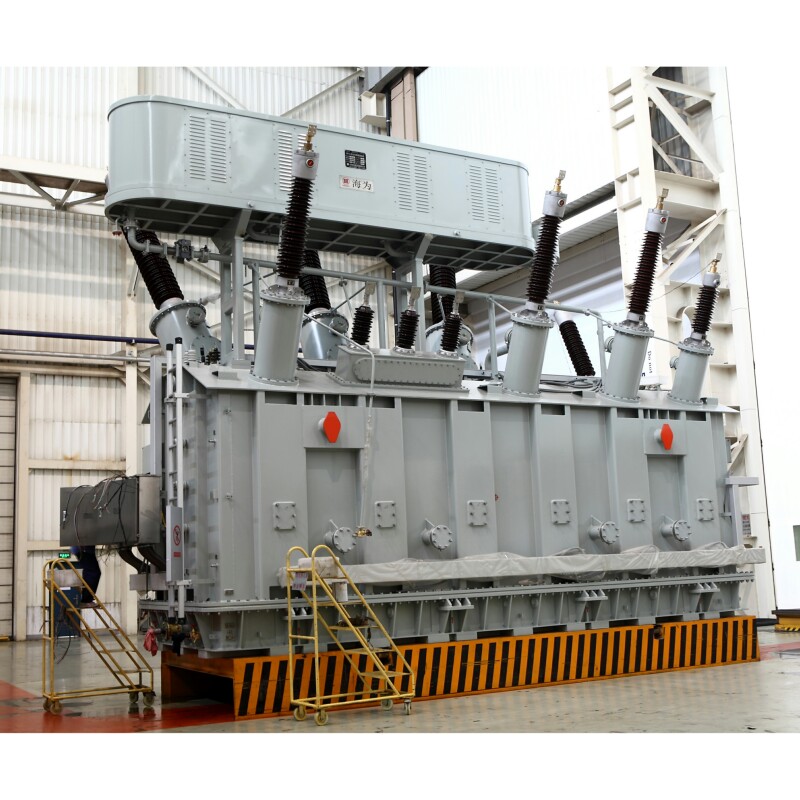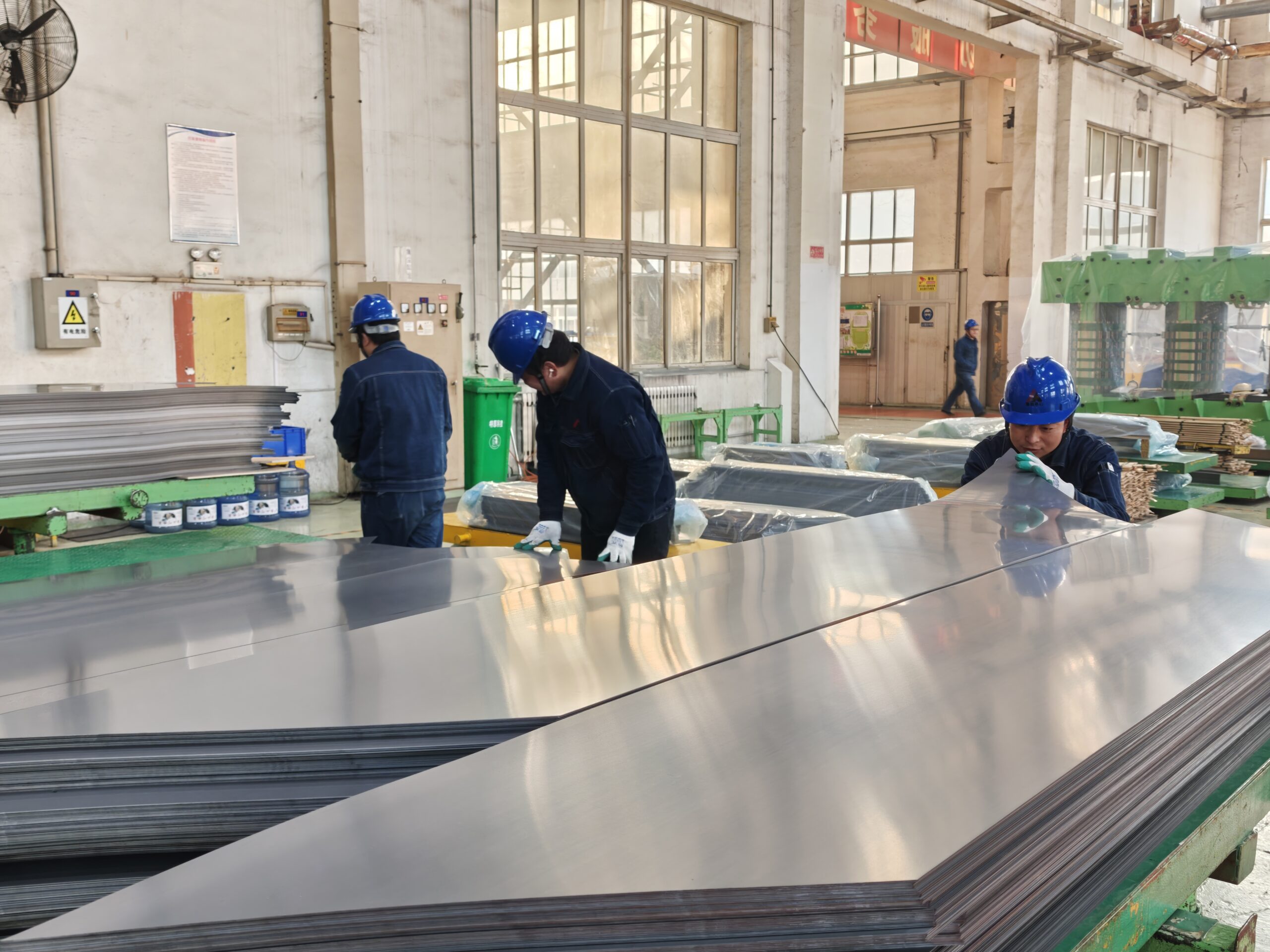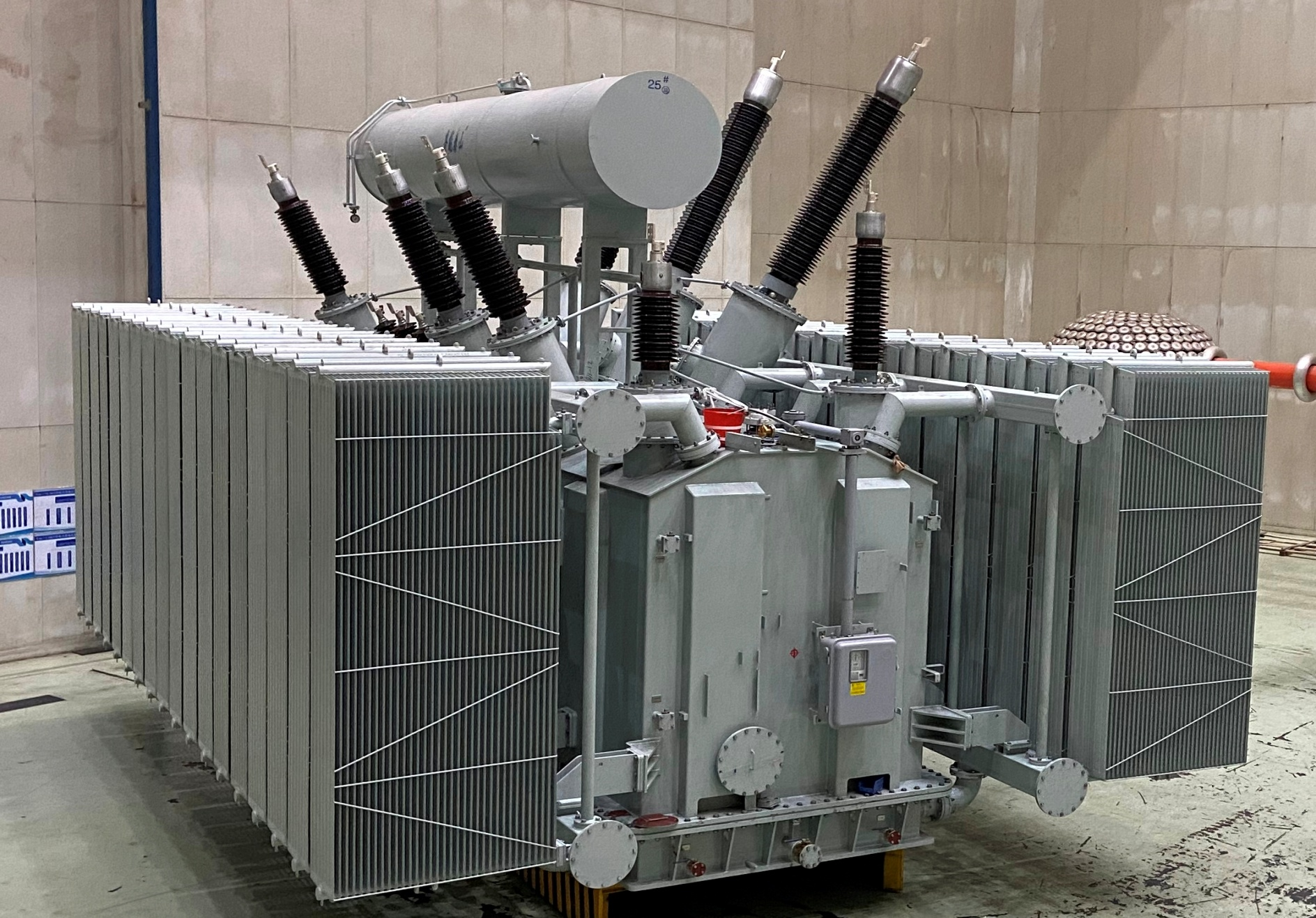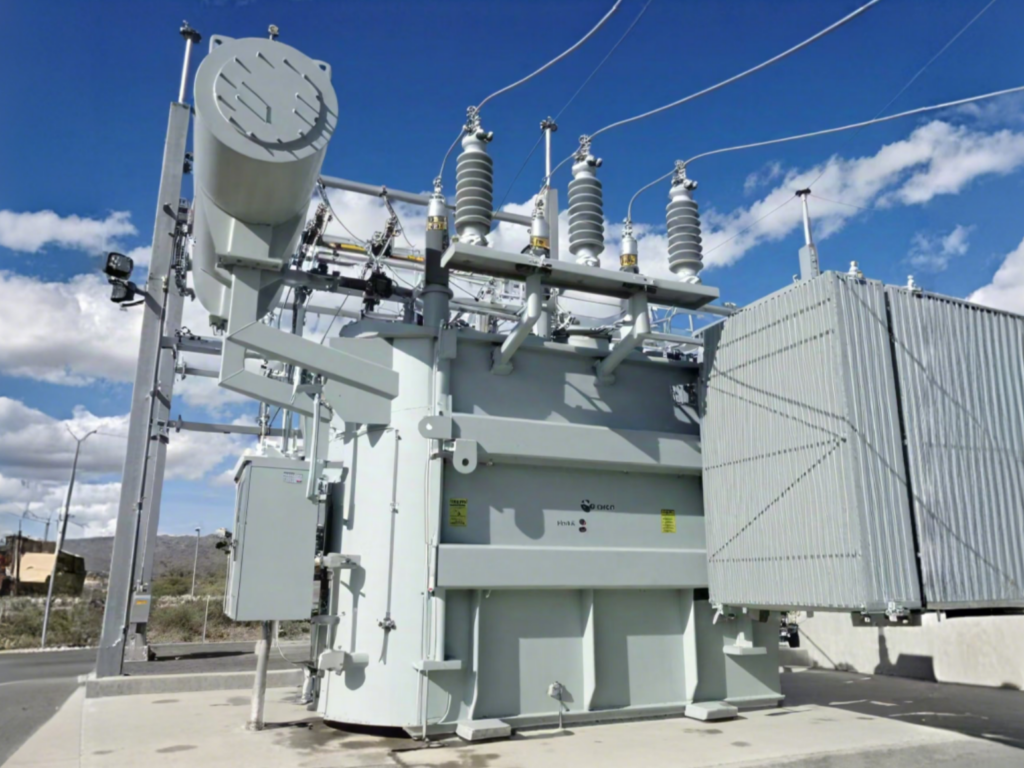As the demand for reliable and efficient power distribution grows, oil-immersed transformers continue to evolve with new technologies and industry advancements. Innovations in materials, cooling methods, and digital monitoring are enhancing transformer performance, efficiency, and sustainability. However, many industry professionals struggle to keep up with these developments, potentially missing opportunities to optimize their transformer systems.
This article explores the latest trends and innovations shaping the future of oil-immersed transformers, helping businesses stay informed and make better investment decisions.
How Are Digital Monitoring and Smart Transformers Improving Efficiency??

The power industry is undergoing a transformation with the adoption of digital monitoring systems and smart transformers. These technologies enhance efficiency, reduce energy losses, enable predictive maintenance, and improve grid stability. By integrating IoT-based sensors, real-time data analytics, and automated controls, smart transformers optimize performance while minimizing downtime and operational costs.
Digital monitoring and smart transformers improve efficiency by enabling real-time data collection, predictive maintenance, automated load balancing, and optimized energy management. These technologies reduce losses, enhance reliability, and extend transformer lifespan in modern power grids.
This guide explores how digital monitoring and smart transformers enhance efficiency, key benefits, and future trends in power distribution.
Smart transformers do not improve energy efficiency compared to traditional transformers.False
Smart transformers reduce energy losses, optimize voltage regulation, and enable predictive maintenance, significantly improving efficiency over traditional transformers.
1. What Are Smart Transformers and Digital Monitoring Systems?
A. Smart Transformers: The Next Generation of Power Management
🔹 Smart transformers integrate digital sensors, IoT connectivity, and automation.
🔹 They continuously monitor voltage, current, temperature, and power quality.
🔹 Real-time data analytics optimize transformer performance and detect faults early.
B. Digital Monitoring Systems: Real-Time Efficiency Tracking
✔ Sensors collect operational data (voltage, temperature, load, oil quality).
✔ IoT-based monitoring enables remote diagnostics and automation.
✔ Advanced AI algorithms predict failures before they occur.
✅ These technologies transform traditional transformers into intelligent, self-optimizing power systems.
2. How Smart Transformers Improve Efficiency
A. Reducing Energy Losses with Real-Time Monitoring
| Loss Type | Traditional Transformer | Smart Transformer | Efficiency Impact |
|---|---|---|---|
| Copper Losses (I²R Losses) | Fixed resistance, higher losses | Dynamic load balancing reduces losses | ⭐⭐⭐⭐⭐ |
| Core Losses (Hysteresis & Eddy Currents) | Passive cooling, no loss optimization | AI-driven cooling reduces excess energy dissipation | ⭐⭐⭐⭐ |
| Stray Losses | No real-time flux monitoring | Magnetic flux sensors optimize energy transfer | ⭐⭐⭐⭐⭐ |
✅ Smart transformers significantly reduce energy waste by optimizing real-time performance.
B. Predictive Maintenance: Preventing Failures Before They Happen
✔ Dissolved Gas Analysis (DGA) sensors detect insulation breakdown early.
✔ Thermal imaging and infrared monitoring identify overheating spots.
✔ AI-driven predictive algorithms analyze historical data to anticipate failures.
✅ This reduces downtime, lowers maintenance costs, and extends transformer lifespan.
C. Automated Load Balancing and Voltage Regulation
✔ Dynamic Voltage Optimization: Adjusts output voltage to prevent overvoltage and undervoltage.
✔ Self-Healing Network Technology: Automatically reroutes power during faults.
✔ Grid Load Balancing: Adjusts power distribution based on demand fluctuations.
✅ These features ensure stable, efficient power supply with minimal energy loss.
D. Enhanced Cooling System for Higher Efficiency
| Cooling System | Traditional Transformer | Smart Transformer |
|---|---|---|
| ONAN (Oil Natural Air Natural) | Passive cooling, efficiency loss under high load | AI-optimized cooling dynamically adjusts airflow |
| ONAF (Oil Natural Air Forced) | Manually controlled fans, inefficient at low loads | Automated fan control minimizes power consumption |
| OFWF (Oil Forced Water Forced) | Requires manual maintenance checks | Predictive cooling system prevents overheating |
✅ Smart cooling systems reduce energy waste and improve efficiency under varying loads.
3. Key Benefits of Smart Transformers in Modern Power Systems
✔ Higher Energy Efficiency: Reduced core and copper losses through real-time adjustments.
✔ Increased Reliability: Automated fault detection prevents sudden failures.
✔ Lower Operational Costs: Predictive maintenance reduces downtime and repairs.
✔ Improved Grid Stability: Self-adjusting voltage and power flow management.
✔ Environmental Sustainability: Lower energy waste and optimized power distribution reduce carbon footprint.
✅ Smart transformers enhance power system performance while reducing operational costs.
4. Real-World Applications of Digital Monitoring and Smart Transformers
A. Smart Grids and Renewable Energy Integration
🔹 Smart transformers stabilize fluctuating renewable energy sources (solar, wind).
🔹 They enable two-way power flow for distributed energy systems.
🔹 Real-time analytics help manage grid demand and storage systems.
✅ Smart transformers support the transition to decentralized and green energy grids.
B. Industrial and Commercial Power Systems
🔹 Factories and data centers benefit from energy-efficient load management.
🔹 Smart transformers improve power quality, reducing harmonic distortions.
🔹 Automated fault isolation prevents large-scale shutdowns.
✅ Industries achieve lower energy bills and increased power system reliability.
C. High-Speed Rail and Electric Vehicle (EV) Charging Infrastructure
🔹 Voltage stabilization ensures stable power supply for EV charging networks.
🔹 Load demand forecasting optimizes energy distribution in real time.
🔹 Fast-response power management reduces fluctuations in railway systems.
✅ Smart transformers ensure smooth operation of electric transport systems.
5. Future Innovations in Smart Transformers and Digital Monitoring
🚀 AI-Powered Self-Healing Transformers: Automatically reconfigure during faults.
🚀 Blockchain-Integrated Power Monitoring: Secures data transactions in energy markets.
🚀 Superconducting Smart Transformers: Near-zero energy loss for ultra-high efficiency.
🚀 5G-Enabled IoT Transformers: Ultra-fast data transmission for precision monitoring.
💡 Future developments will further enhance transformer intelligence and efficiency.
What New Materials Are Enhancing Transformer Durability and Performance?

Transformer technology is evolving with the introduction of new materials that improve durability, efficiency, and environmental sustainability. Advances in core materials, winding conductors, insulating systems, and cooling fluids are enhancing performance while reducing energy losses and operational costs. These innovations enable transformers to operate longer, with higher efficiency and improved reliability.
New materials such as amorphous metal cores, superconducting windings, biodegradable insulating oils, and advanced cooling systems are enhancing transformer durability and performance. These materials reduce energy losses, improve thermal stability, and extend the operational lifespan of transformers.
This guide explores cutting-edge materials in transformer construction, their impact on efficiency, and how they contribute to long-term durability.
Transformer performance is not affected by material selection.False
New materials such as amorphous metals, high-temperature insulation, and advanced cooling fluids significantly improve transformer performance, reducing losses and extending lifespan.
1. Advanced Core Materials for Higher Efficiency
The core material is critical in determining transformer efficiency, as it directs magnetic flux and minimizes energy losses.
A. Traditional vs. New Core Materials
| Core Material | Properties | Efficiency Improvement |
|---|---|---|
| Grain-Oriented Silicon Steel (CRGO) | Low core loss, widely used | ⭐⭐⭐ |
| Amorphous Metal Alloys | Ultra-low hysteresis loss, lightweight | ⭐⭐⭐⭐⭐ |
| Nanocrystalline Cores | High permeability, low eddy currents | ⭐⭐⭐⭐⭐ |
| Superconducting Magnetic Cores | Zero resistance, near-zero energy loss | ⭐⭐⭐⭐⭐ |
✅ Nanocrystalline and amorphous metals are revolutionizing transformer efficiency by significantly reducing core losses.
B. How New Core Materials Improve Transformer Performance
✔ Lower Hysteresis Loss: New materials require less energy to realign magnetic domains.
✔ Reduced Eddy Currents: Higher resistivity alloys minimize heat generation.
✔ Lighter and More Compact Designs: Enables smaller, more efficient transformers.
✔ Improved Saturation Properties: Handles high magnetic flux without degradation.
✅ Using these materials improves transformer lifespan, energy savings, and sustainability.
2. Next-Generation Winding Materials for Lower Resistance
Transformer windings determine current flow efficiency, and innovations in conductor materials reduce resistance and heat buildup.
A. High-Conductivity Winding Materials
| Winding Material | Electrical Conductivity | Durability | Efficiency |
|---|---|---|---|
| Copper | High | High | ⭐⭐⭐⭐⭐ |
| Aluminum | Moderate | Moderate | ⭐⭐⭐ |
| Superconducting Wires | Near-zero resistance | High | ⭐⭐⭐⭐⭐ |
| Graphene-Based Conductors | Ultra-lightweight, high conductivity | High | ⭐⭐⭐⭐⭐ |
✅ Superconducting windings eliminate electrical resistance, improving transformer energy efficiency.
B. Advantages of Advanced Winding Materials
✔ Lower Resistance: Superconductors eliminate I²R losses.
✔ Higher Thermal Tolerance: Graphene-based conductors withstand extreme temperatures.
✔ Lightweight and Compact: Reduces transformer weight and material costs.
✔ Enhanced Mechanical Strength: Withstands mechanical stress and vibration.
✅ Upgrading winding materials reduces operational costs and improves efficiency.
3. New Insulating Materials for Thermal Stability
Transformers require robust insulation to prevent electrical breakdown and overheating.
A. High-Performance Insulating Materials
| Insulation Type | Properties | Thermal Endurance | Efficiency Gain |
|---|---|---|---|
| Nomex Aramid Paper | High-temperature resistance, flame retardant | ⭐⭐⭐⭐⭐ | ⭐⭐⭐⭐ |
| Biodegradable Ester Fluids | Eco-friendly, enhances insulation | ⭐⭐⭐⭐ | ⭐⭐⭐⭐⭐ |
| Silicone-Based Insulation | Long lifespan, moisture-resistant | ⭐⭐⭐⭐ | ⭐⭐⭐ |
| Aerogel-Based Insulation | Ultra-lightweight, high voltage tolerance | ⭐⭐⭐⭐⭐ | ⭐⭐⭐⭐⭐ |
✅ Advanced insulation extends transformer lifespan and reduces maintenance costs.
B. Benefits of Next-Gen Insulation
✔ Higher Dielectric Strength: Reduces risk of electrical breakdown.
✔ Better Heat Dissipation: Prevents overheating and insulation degradation.
✔ Eco-Friendly Materials: Biodegradable esters minimize environmental impact.
✔ Improved Moisture Resistance: Enhances transformer longevity in humid conditions.
✅ Using high-performance insulation improves thermal stability and transformer safety.
4. Advanced Cooling Systems for Heat Management
Cooling systems dissipate heat, preventing overheating and component failure.
A. High-Efficiency Cooling Fluids
| Cooling Fluid | Thermal Conductivity | Environmental Impact | Efficiency |
|---|---|---|---|
| Mineral Oil | Moderate | High carbon footprint | ⭐⭐⭐ |
| Natural Ester Oil | High | Biodegradable, eco-friendly | ⭐⭐⭐⭐⭐ |
| Synthetic Ester Fluids | High | Non-toxic, long lifespan | ⭐⭐⭐⭐⭐ |
| Supercritical CO₂ Cooling | Ultra-high | Zero emissions | ⭐⭐⭐⭐⭐ |
✅ Eco-friendly cooling solutions improve transformer sustainability while maintaining performance.
B. Innovations in Transformer Cooling
✔ IoT-Controlled Cooling Systems: Adjust cooling based on load conditions.
✔ Phase-Change Cooling Materials: Store and release heat efficiently.
✔ Self-Healing Insulating Oils: Extend operational lifespan by preventing oxidation.
✔ Water-Free Cooling Methods: Eliminate water consumption in cooling systems.
✅ These technologies ensure long-term durability and reduced environmental impact.
5. Future Innovations in Transformer Materials
🚀 3D-Printed Core Components: Reduces material waste and enhances precision.
🚀 Carbon Nanotube-Based Conductors: Lighter and more efficient than copper.
🚀 Quantum Dot-Coated Insulation: Increases heat resistance and electrical tolerance.
🚀 Self-Healing Polymers: Repair insulation damage automatically.
💡 Future materials will further enhance transformer durability, sustainability, and efficiency.
How Are Eco-Friendly Transformer Oils Reducing Environmental Impact?
Transformer oil is essential for insulation and cooling in oil-immersed transformers, but traditional mineral-based oils pose environmental risks, including soil and water contamination, toxic waste, and fire hazards. Eco-friendly transformer oils, such as natural and synthetic esters, provide a sustainable alternative, reducing environmental impact while improving transformer safety and efficiency.
Eco-friendly transformer oils reduce environmental impact by being biodegradable, non-toxic, and fire-resistant. These oils improve insulation, enhance cooling, and reduce carbon emissions compared to traditional mineral oils, making power systems more sustainable and efficient.
This guide explores the benefits of eco-friendly transformer oils, their environmental impact, and how they improve transformer performance.
Traditional mineral oils have the same environmental impact as eco-friendly transformer oils.False
Eco-friendly transformer oils, such as natural and synthetic esters, are biodegradable, non-toxic, and fire-resistant, significantly reducing environmental risks compared to traditional mineral oils.
1. Why Are Traditional Transformer Oils Harmful to the Environment?
Traditional mineral oils are derived from petroleum-based hydrocarbons, leading to several environmental and safety concerns.
A. Key Environmental Issues of Mineral Oils
| Issue | Cause | Environmental Impact |
|---|---|---|
| Soil & Water Contamination | Oil leaks from transformers | Pollutes groundwater and ecosystems |
| Non-Biodegradability | Petroleum-based composition | Stays in the environment for decades |
| Toxicity | Contains harmful chemicals | Hazardous to wildlife and humans |
| Fire Risk | Low fire resistance | Increases chances of transformer fires |
| High Carbon Footprint | Petroleum extraction & refining | Contributes to greenhouse gas emissions |
✅ Replacing mineral oils with eco-friendly alternatives helps mitigate these risks.
2. What Are Eco-Friendly Transformer Oils?
Eco-friendly transformer oils are biodegradable, non-toxic, and sustainable insulating liquids that provide the same or better performance than mineral oils while reducing environmental impact.
A. Types of Eco-Friendly Transformer Oils
| Oil Type | Source | Environmental Benefit | Performance |
|---|---|---|---|
| Natural Ester Oil | Plant-based (soybean, rapeseed) | 100% biodegradable, low toxicity | ⭐⭐⭐⭐⭐ |
| Synthetic Ester Oil | Chemically engineered biodegradable oil | High oxidation stability, non-toxic | ⭐⭐⭐⭐⭐ |
| Silicone-Based Fluids | Synthetic polymer-based | Non-toxic, recyclable | ⭐⭐⭐⭐ |
| Supercritical CO₂-Based Oils | Renewable CO₂ extraction | Zero emissions, ultra-low toxicity | ⭐⭐⭐⭐⭐ |
✅ Natural and synthetic esters offer the best balance of sustainability and high performance.
3. How Do Eco-Friendly Oils Improve Transformer Performance?
Eco-friendly oils not only reduce environmental harm but also enhance transformer efficiency and safety.
A. Biodegradability & Non-Toxicity
✔ Biodegradable within 28 days, reducing long-term pollution.
✔ Non-toxic to humans and wildlife, preventing hazardous waste issues.
✅ Unlike mineral oils, eco-friendly oils degrade naturally, minimizing contamination risks.
B. Fire Safety & Thermal Stability
✔ Higher Fire Point (300-350°C) compared to mineral oil (160-180°C).
✔ Self-extinguishing properties reduce transformer fire hazards.
✔ Lower risk of explosion in high-voltage applications.
✅ Increased fire resistance makes transformers safer and more reliable.
C. Superior Cooling & Insulation
✔ Better heat dissipation prevents overheating.
✔ Lower viscosity improves oil circulation and reduces cooling system strain.
✔ Enhanced dielectric strength ensures better electrical insulation.
✅ Cooler, well-insulated transformers have a longer lifespan and higher efficiency.
D. Reduced Maintenance & Longer Oil Lifespan
✔ Higher oxidation stability extends oil life up to 2-3 times longer than mineral oil.
✔ Less sludge formation reduces the need for frequent oil changes.
✔ Lower moisture absorption improves insulation integrity.
✅ Longer-lasting oils reduce maintenance costs and waste generation.
4. Environmental and Economic Benefits of Eco-Friendly Oils
| Benefit | Environmental Impact | Economic Impact |
|---|---|---|
| Less Pollution | Prevents oil spills and toxic waste | Reduces cleanup costs |
| Lower Carbon Footprint | Renewable sources reduce CO₂ emissions | Supports green energy initiatives |
| Energy Efficiency | Improves cooling, reducing energy waste | Lowers operational costs |
| Extended Transformer Life | Reduces overheating and insulation failure | Delays costly transformer replacements |
✅ Eco-friendly oils provide both environmental and economic advantages.
5. Regulations & Industry Standards Supporting Green Transformer Oils
🚀 IEC 62770 – Defines standards for natural ester fluids in transformers.
🚀 IEEE C57.147 – Guides maintenance of ester-based insulating fluids.
🚀 EPA Environmental Guidelines – Encourages biodegradable transformer oils to reduce pollution.
🚀 ISO 14001 – Promotes sustainability in transformer oil production.
✅ Regulatory bodies are encouraging the transition to sustainable transformer oils.
6. Future Innovations in Eco-Friendly Transformer Oils
🚀 Nano-Enhanced Insulating Fluids: Improves heat transfer and breakdown voltage.
🚀 Hydrocarbon-Free Synthetic Oils: Eliminate reliance on fossil fuels.
🚀 Self-Healing Oils: Repairs molecular structure to extend lifespan.
🚀 Smart Oil Sensors: AI-based monitoring for real-time performance tracking.
💡 Next-generation oils will further improve sustainability and efficiency.
What Advancements in Cooling Systems Are Improving Transformer Reliability?

Cooling systems are essential for maintaining transformer efficiency, preventing overheating, and extending operational lifespan. New advancements in cooling technologies, such as AI-driven thermal management, eco-friendly cooling fluids, and advanced heat exchangers, are enhancing transformer reliability. These innovations reduce energy losses, minimize maintenance costs, and improve grid stability.
Advancements in transformer cooling systems, including AI-based temperature control, high-efficiency heat exchangers, and biodegradable cooling fluids, are significantly improving reliability by reducing thermal stress, preventing failures, and enhancing efficiency.
This guide explores the latest developments in transformer cooling, their impact on reliability, and future trends in thermal management.
Cooling system advancements do not affect transformer reliability.False
Modern cooling technologies, such as AI-driven systems and advanced heat exchangers, significantly improve transformer reliability by reducing thermal stress and preventing overheating.
1. Why Is Efficient Cooling Essential for Transformer Reliability?
Heat is a major factor affecting transformer performance. Excessive temperatures cause insulation degradation, increased losses, and reduced lifespan.
A. Impact of Overheating on Transformers
| Overheating Issue | Cause | Consequence |
|---|---|---|
| Insulation Breakdown | High temperatures degrade oil and winding insulation | Shortens transformer lifespan |
| Increased Copper Losses | High temperatures increase resistance in windings | Reduces efficiency and increases energy loss |
| Oil Degradation | Heat accelerates oxidation and sludge formation | Lowers dielectric strength, increasing failure risk |
| Mechanical Stress | Uneven expansion and contraction of materials | Leads to structural damage and leaks |
✅ Optimized cooling systems prevent overheating, ensuring stable transformer operation.
2. New Cooling Technologies Enhancing Transformer Reliability
A. AI-Based Cooling and Smart Temperature Control
✔ Real-Time Monitoring: IoT sensors continuously track oil and winding temperatures.
✔ AI-Powered Thermal Regulation: Adjusts cooling based on transformer load and external conditions.
✔ Predictive Cooling Management: Identifies overheating risks before failures occur.
✅ AI-driven cooling reduces energy waste and prevents transformer shutdowns.
B. Advanced Heat Exchangers for More Efficient Cooling
✔ High-Efficiency Radiators: Improved surface area and airflow for better heat dissipation.
✔ Phase-Change Cooling Materials: Absorb and release heat efficiently, reducing thermal spikes.
✔ Nanotechnology-Based Coolants: Increase heat transfer rates, improving thermal performance.
✅ Next-gen heat exchangers improve transformer efficiency and reliability under heavy loads.
C. Eco-Friendly Cooling Fluids for Sustainability and Safety
✔ Natural Ester Fluids: 100% biodegradable, with higher fire resistance than mineral oil.
✔ Synthetic Esters: Long lifespan, low oxidation rate, and superior cooling properties.
✔ Silicone-Based Fluids: Non-toxic, non-flammable, and resistant to moisture contamination.
| Cooling Fluid | Environmental Impact | Fire Resistance | Efficiency |
|---|---|---|---|
| Mineral Oil | High pollution risk | Moderate | ⭐⭐⭐ |
| Natural Esters | Biodegradable | High | ⭐⭐⭐⭐⭐ |
| Synthetic Esters | Low toxicity | Very High | ⭐⭐⭐⭐⭐ |
| Silicone-Based Oil | Non-toxic | Very High | ⭐⭐⭐⭐ |
✅ Eco-friendly cooling fluids reduce environmental risk while improving transformer longevity.
3. Innovations in Cooling Methods for High-Power Transformers
A. Hybrid Cooling Systems for Load-Adaptive Cooling
✔ Combines air, oil, and water cooling for maximum efficiency.
✔ Automatically switches cooling modes based on real-time load conditions.
✔ Reduces wear and tear on components, extending operational lifespan.
✅ Hybrid cooling optimizes energy use and enhances cooling performance.
B. High-Performance Liquid Cooling
✔ Oil Forced Water Forced (OFWF): Uses water-cooled heat exchangers for rapid heat dissipation.
✔ Dielectric Liquid Cooling: Fully submerges transformer components in high-performance cooling oil.
✔ Supercritical CO₂ Cooling: Uses compressed CO₂ for ultra-fast heat transfer with zero environmental impact.
✅ Advanced liquid cooling improves efficiency, especially in high-voltage applications.
C. Dry-Type Transformer Cooling Enhancements
✔ High-Efficiency Air Cooling: Uses optimized fan systems for better airflow.
✔ Graphene-Coated Heat Sinks: Improve thermal conductivity while reducing size and weight.
✔ Closed-Loop Cooling Systems: Recirculate cooling air to maintain consistent temperatures.
✅ Enhanced air-cooling technologies improve the reliability of dry-type transformers in industrial applications.
4. Future Trends in Transformer Cooling Systems
🚀 Self-Healing Cooling Fluids: Nanotechnology-based oils that repair molecular degradation.
🚀 AI-Integrated Predictive Maintenance: Smart analytics for early fault detection.
🚀 Carbon-Neutral Cooling Solutions: Using sustainable, energy-efficient materials.
🚀 Wireless Thermal Sensors: Enable real-time, contactless temperature monitoring.
💡 Next-generation cooling solutions will further enhance efficiency, sustainability, and transformer longevity.
How Is Automation Changing Transformer Maintenance and Diagnostics??
Transformer maintenance is undergoing a revolution with automation and AI-driven diagnostics, replacing manual inspections with real-time condition monitoring, predictive analytics, and automated fault detection. These advancements reduce downtime, prevent failures, and optimize maintenance schedules, improving efficiency and reliability in power distribution networks.
Automation is transforming transformer maintenance and diagnostics by using IoT sensors, AI-driven analytics, and remote monitoring to detect issues early, predict failures, and optimize maintenance. This reduces operational costs, extends transformer lifespan, and enhances grid reliability.
This guide explores how automation is improving transformer maintenance, key benefits, and future trends in predictive diagnostics.
Transformer maintenance cannot be automated and must always be performed manually.False
Automation enables real-time monitoring, AI-driven diagnostics, and predictive maintenance, reducing the need for manual inspections and improving efficiency.
1. How Traditional Transformer Maintenance Is Evolving
A. Manual Maintenance vs. Automated Monitoring
| Factor | Traditional Maintenance | Automated Maintenance |
|---|---|---|
| Inspection Frequency | Periodic (every few months) | Continuous real-time monitoring |
| Fault Detection | Reactive (after failure occurs) | Predictive (before failure happens) |
| Data Collection | Manual tests, visual inspection | AI-driven data analytics from IoT sensors |
| Maintenance Costs | Higher due to emergency repairs | Lower with condition-based servicing |
| Transformer Downtime | Longer due to unplanned shutdowns | Minimal with predictive alerts |
✅ Automation replaces reactive maintenance with proactive, data-driven diagnostics.
2. Key Automation Technologies in Transformer Maintenance
A. IoT-Based Smart Sensors for Real-Time Monitoring
✔ Temperature Sensors: Track oil and winding temperature variations.
✔ Dissolved Gas Analysis (DGA) Sensors: Detect early insulation degradation.
✔ Partial Discharge Monitors: Identify electrical faults before failure.
✔ Vibration Sensors: Detect mechanical stress and core instability.
✅ IoT sensors provide real-time transformer health data, reducing failure risks.
B. AI and Machine Learning for Predictive Maintenance
✔ Analyzes historical transformer data to identify failure patterns.
✔ Predicts insulation breakdown, overheating, and voltage fluctuations.
✔ Recommends optimized maintenance schedules based on actual usage.
✅ AI-driven analytics reduce unnecessary maintenance and extend transformer lifespan.
C. Remote Monitoring and Cloud-Based Diagnostics
✔ Operators can access transformer data from anywhere.
✔ Cloud-based dashboards provide instant health status updates.
✔ Automated alerts notify technicians of potential issues.
✅ Remote monitoring eliminates the need for on-site inspections, improving efficiency.
3. How Automation Improves Transformer Reliability and Efficiency
A. Preventing Failures Before They Happen
✔ AI-powered failure prediction reduces unexpected breakdowns by up to 80%.
✔ Early gas accumulation detection (DGA) prevents insulation failure.
✔ Automated thermal imaging detects overheating hotspots in real time.
✅ Automated systems detect minor issues before they become major failures.
B. Reducing Maintenance Costs and Downtime
| Cost Factor | Manual Maintenance | Automated Predictive Maintenance |
|---|---|---|
| Emergency Repairs | High | Low |
| Scheduled Maintenance | Fixed intervals | Condition-based |
| Transformer Lifespan | Shorter due to wear | Longer with optimized servicing |
| Unplanned Downtime | Frequent | Minimal |
✅ Automated diagnostics cut maintenance costs and reduce unplanned outages.
C. Optimizing Transformer Performance
✔ Load Balancing Algorithms: Adjust power distribution to prevent overloads.
✔ AI-Based Oil Quality Monitoring: Ensures optimal insulation performance.
✔ Voltage Stability Control: Prevents fluctuations that stress transformer components.
✅ Automated performance optimization enhances energy efficiency and grid stability.
4. Future Trends in Automated Transformer Diagnostics
🚀 Self-Healing Transformers: AI-controlled systems adjust parameters to prevent failures.
🚀 Blockchain-Based Maintenance Logs: Secure, real-time tracking of service records.
🚀 Drone-Assisted Infrared Inspections: AI-powered drones detect external transformer faults.
🚀 Edge Computing for Faster Response: Local AI processing enables real-time failure prevention.
💡 Next-gen automation will further improve transformer maintenance, efficiency, and sustainability.
What Are the Future Trends in Oil-Immersed Transformer Design?

Oil-immersed transformers are critical components of modern power grids, ensuring efficient voltage conversion and energy transmission. As power demands grow and environmental regulations tighten, new advancements in transformer design are shaping the future of power distribution. Innovations in smart monitoring, eco-friendly materials, high-efficiency cooling, and AI-driven optimization are making oil-immersed transformers more reliable, efficient, and sustainable.
Future trends in oil-immersed transformer design focus on improving efficiency, reducing environmental impact, enhancing digital monitoring, and incorporating AI-driven predictive maintenance. Innovations in biodegradable insulation, high-temperature superconductors, and smart grid integration are shaping the next generation of transformers.
This guide explores key trends in oil-immersed transformer design, how they improve efficiency, and what the future holds for power transmission technology.
Oil-immersed transformer design has remained unchanged for decades.False
Modern oil-immersed transformers are evolving with smart monitoring, biodegradable insulating oils, AI-driven diagnostics, and improved cooling technologies, enhancing efficiency and sustainability.
1. Smart and AI-Driven Transformers for Predictive Maintenance
A. AI-Integrated Condition Monitoring
✔ IoT Sensors for Real-Time Data: Track oil quality, temperature, and electrical loads.
✔ AI-Powered Fault Detection: Predicts failures before they occur, reducing downtime.
✔ Remote Cloud Monitoring: Enables operators to manage transformer performance from anywhere.
✅ Smart transformers prevent failures, reducing maintenance costs and improving grid reliability.
B. Self-Healing Transformer Systems
✔ AI Algorithms Adjust Transformer Load in Real Time to prevent overheating.
✔ Automated Cooling Adjustments Based on Load Fluctuations optimize performance.
✔ Autonomous Reconfiguration for Fault Isolation improves grid resilience.
✅ Self-healing capabilities minimize outages and extend transformer lifespan.
2. Eco-Friendly and Biodegradable Transformer Oils
A. Transition to Sustainable Insulating Fluids
| Oil Type | Source | Environmental Benefits | Performance |
|---|---|---|---|
| Mineral Oil | Petroleum-based | High carbon footprint, non-biodegradable | ⭐⭐⭐ |
| Natural Ester Oils | Plant-based (soybean, rapeseed) | 100% biodegradable, fire-resistant | ⭐⭐⭐⭐⭐ |
| Synthetic Esters | Chemically engineered | High oxidation resistance, eco-friendly | ⭐⭐⭐⭐⭐ |
| Silicone-Based Oils | Synthetic polymer | Low toxicity, long lifespan | ⭐⭐⭐⭐ |
✅ Biodegradable oils enhance sustainability while maintaining high insulation and cooling efficiency.
B. Improved Oil Performance for Higher Efficiency
✔ Lower Viscosity for Better Cooling: Enhances oil circulation and heat dissipation.
✔ Increased Fire Resistance: Reduces the risk of transformer fires in high-voltage applications.
✔ Longer Oil Lifespan: Advanced chemical stability reduces oil degradation and maintenance frequency.
✅ Eco-friendly oils improve both environmental impact and transformer efficiency.
3. High-Efficiency Core and Winding Materials
A. Next-Generation Core Materials
| Core Material | Loss Reduction | Efficiency Improvement |
|---|---|---|
| Grain-Oriented Silicon Steel (CRGO) | Moderate | ⭐⭐⭐⭐ |
| Amorphous Metal Cores | 70% lower core losses | ⭐⭐⭐⭐⭐ |
| Nanocrystalline Cores | Ultra-low eddy currents | ⭐⭐⭐⭐⭐ |
| Superconducting Magnetic Cores | Near-zero resistance | ⭐⭐⭐⭐⭐ |
✅ New core materials significantly reduce energy losses, improving overall transformer performance.
B. Advanced Winding Technologies
✔ Superconducting Windings for Zero Electrical Resistance: Boosts efficiency while reducing power losses.
✔ Graphene-Based Conductors: Lighter and more conductive than copper.
✔ Self-Healing Insulation Coatings: Prevents degradation from thermal cycling.
✅ Improved winding technology ensures lower resistance, better durability, and higher efficiency.
4. Advanced Cooling Technologies for Heat Management
A. High-Performance Cooling Systems
| Cooling Type | Efficiency | Best Application |
|---|---|---|
| ONAN (Oil Natural Air Natural) | ⭐⭐⭐ | Small and medium transformers |
| ONAF (Oil Natural Air Forced) | ⭐⭐⭐⭐ | Medium transformers with high loads |
| OFWF (Oil Forced Water Forced) | ⭐⭐⭐⭐⭐ | High-power industrial transformers |
| Dielectric Liquid Cooling | ⭐⭐⭐⭐⭐ | Compact and high-performance transformers |
✅ Improved cooling prevents overheating, reducing the risk of insulation failure.
B. Smart Cooling Systems with AI Control
✔ AI-Optimized Cooling Fans: Adjust airflow based on real-time load conditions.
✔ Phase-Change Cooling Materials: Absorb and release heat to maintain stable temperatures.
✔ Self-Regulating Oil Circulation: Adjusts oil flow based on transformer heat output.
✅ Smart cooling reduces energy consumption while enhancing transformer reliability.
5. Grid Integration and Digital Twin Technology
A. Smart Grid-Ready Transformers
✔ Real-Time Communication with Smart Grids: Improves power flow optimization.
✔ Voltage Regulation for Demand Response: Supports fluctuating renewable energy loads.
✔ Automated Load Balancing: Prevents overloading and optimizes power distribution.
✅ Smart grid integration makes transformers more adaptable to modern energy demands.
B. Digital Twin Technology for Transformer Optimization
✔ Creates a Virtual Replica of the Transformer: Enables real-time performance simulation.
✔ Predicts Maintenance Needs Before Issues Occur: Reduces downtime and repair costs.
✔ AI-Driven Performance Optimization: Adjusts operating parameters to maximize efficiency.
✅ Digital twins revolutionize transformer monitoring and predictive maintenance.
6. Future Innovations in Oil-Immersed Transformer Design
🚀 Self-Healing Transformer Fluids: Repair oil degradation on a molecular level.
🚀 Wireless Power Transfer for Transformers: Eliminates the need for physical windings.
🚀 Quantum Computing for Grid Optimization: AI-driven energy management at unprecedented speeds.
🚀 Recyclable Transformer Components: 100% reusable materials for zero-waste production.
💡 Future transformers will be smarter, greener, and more efficient than ever before.
Conclusion
The oil-immersed transformer industry is undergoing significant advancements, from smart monitoring technologies to eco-friendly materials and improved cooling systems. Keeping up with these trends allows businesses to enhance efficiency, reduce maintenance costs, and adopt more sustainable power solutions.
Looking to upgrade your transformer technology? Contact us today for expert insights and solutions!



